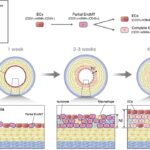スウォンジー大学の研究チームは、緊急集中治療と人工呼吸器のサポートを受ける患者の優先順位付けに役立つ「デジタルツイン」を開発しました。 A research team at Swansea University have developed a ‘digital twin’ to help prioritise patients for urgent intensive care and ventilator support.
2022-12-22 スウォンジー大学
この3層構造のシステムは、ディープラーニングの手法を用いて患者固有のデジタルツインを構築し、重症肺炎患者の中から重要な症例を特定し、優先順位をつけます。
デジタルツインは、現実世界の物理システムや製品を仮想的に表現したもの(またはコンピュータプログラム)で、リアルタイムのデータから更新され、シミュレーション、機械学習、推論を利用して意思決定を支援します。
著者であり、理工学部研究・イノベーション・インパクト担当副学部長であるPerumal Nithiarasu教授は、次のようにコメントしています。「人間のデジタルツインは、人間のシステムまたはサブシステムのデジタルレプリカです。このレプリカは、個人または患者のシステムの構造または機能、あるいはその両方について、パーソナライズされたデジタル表現です。
患者のバイタル(心拍数、呼吸数など)からの定期的な入力データを用いて、現在の既知の状態に基づいて患者の健康状態がどのように変化しそうかをリアルタイムでフィードバックすることができます。
このデジタルレプリカ(モデル)が算出する重症度スコアは、バイタルなどの測定値を用いて患者ごとにパーソナライズされ、集中治療室(ITU)や人工呼吸器を必要とする肺炎患者の優先順位を決定するための基礎となります。
提案された3段階の戦略は、重症度指数の生成に使用されます。
(1) 緊急性の高い症例を特定する。
(2) 重症患者への治療と機械的人工呼吸を行う。
(3)最適なタイミングで人工呼吸と集中治療を中止する。
本研究で算出した重症度指標は,死亡確率と機械的換気を必要とする確率である.これらにより、患者の優先順位付けリストの作成が可能となり、ITUへの患者の出入りを円滑にすることができる。
<関連情報>
- https://www.swansea.ac.uk/press-office/news-events/news/2022/12/researchers-develop-ai-enabled-system-for-prioritising-pneumonia-patient-treatment.php
- https://journals.sagepub.com/doi/full/10.1177/09544119221123431
肺炎患者の治療の優先順位を決定するAIベースのデジタルツイン An AI based digital-twin for prioritising pneumonia patient treatment
Neeraj Kavan Chakshu and Perumal Nithiarasu
Journal of Engineering in Medicine Published:September 18, 2022
DOI:https://doi.org/10.1177/09544119221123431

Abstract
A digital-twin based three-tiered system is proposed to prioritise patients for urgent intensive care and ventilator support. The deep learning methods are used to build patient-specific digital-twins to identify and prioritise critical cases amongst severe pneumonia patients. The three-tiered strategy is proposed to generate severity indices to: (1) identify urgent cases, (2) assign critical care and mechanical ventilation, and (3) discontinue mechanical ventilation and critical care at the optimal time. The severity indices calculated in the present study are the probability of death and the probability of requiring mechanical ventilation. These enable the generation of patient prioritisation lists and facilitates the smooth flow of patients in and out of Intensive Therapy Units (ITUs). The proposed digital-twin is built on pre-trained deep learning models using data from more than 1895 pneumonia patients. The severity indices calculated in the present study are assessed using the standard benchmark of Area Under Receiving Operating Characteristic Curve (AUROC). The results indicate that the ITU and mechanical ventilation can be prioritised correctly to an AUROC value as high as 0.89. This model may be employed in its current form to COVID-19 patients, but transfer learning with COVID-19 patient data will improve the predictions. The digital-twin model developed and tested is available via accompanying Supplemental material.


